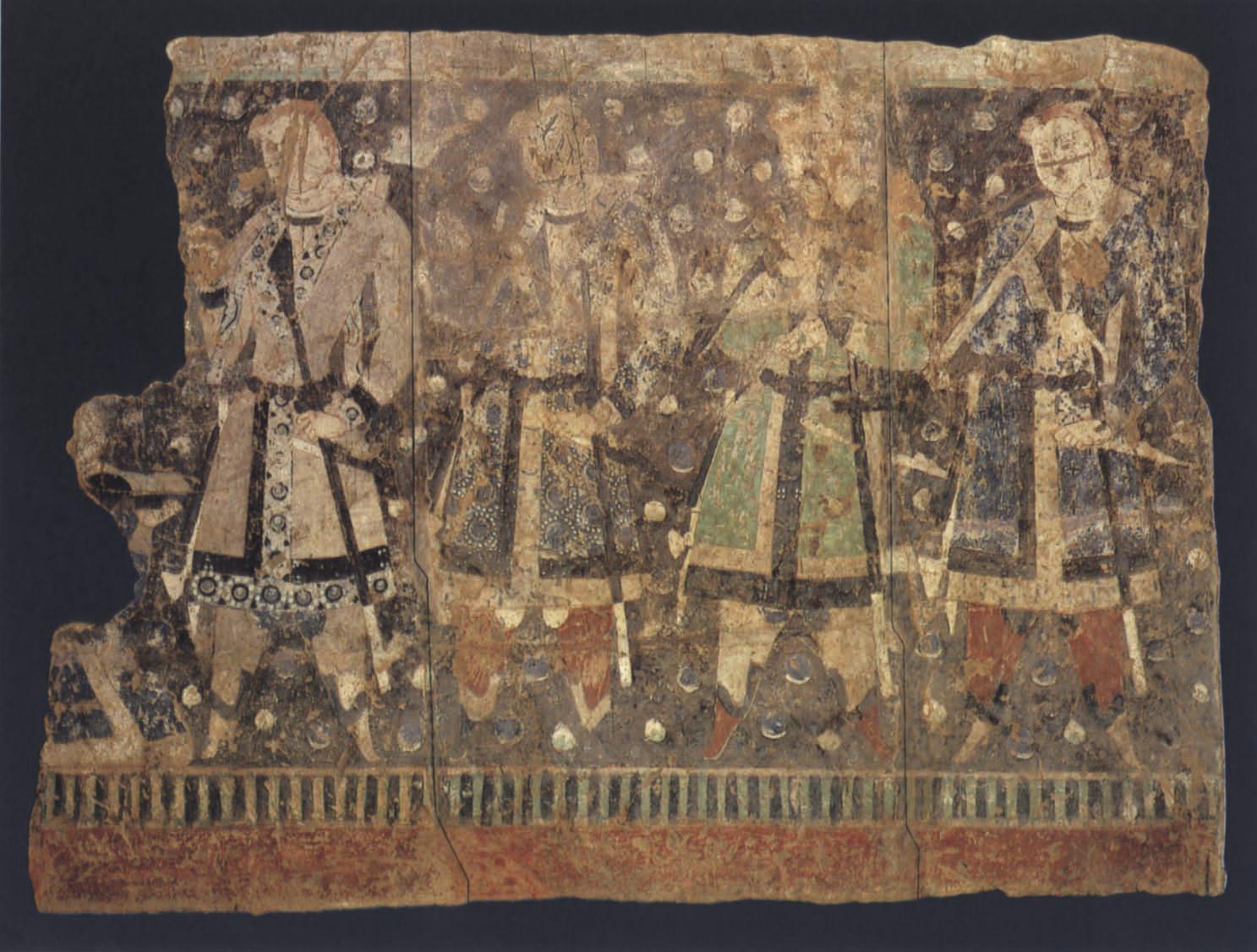
Shop Amazon - Create an Amazon Baby Registry
Kizil Caves, near Kucha, Tarim Basin
Cave of the Sixteen Sword Bearers



107 Group of Donors
Kizil, Cave of the Sixteen Sword-Bearers, 600-650
Wall painting, 150.5 x 208.0 cm.
MIK III 8426a,b,c
No other relics of the culture of Central Asia tell us so much about the various origins of its inhabitants in the second half of the first millennium A.D. as the portraits of donors in the murals. Here are four representatives of the race under which Kucha's art flourished. They are Tocharian knights, of undeniably Indo-European origin. With their short, reddish brown hair parted in the center, their light-colored eyes, and what looks like Iranian apparel, they form a marked contrast to the Uighurian princes of No. 108. Over their tight-fitting, Parthian-style trousers they wear splendid lapelled coats in the fashion of Sasanian nobles, differing only in color and ornamentation. Each of the four has a dagger and a sword with an unusually long hilt hanging from his belt, which is made of metal disks. Their faces are badly damaged.
Portrayals of donors were usually to be found in the caves on the walls of the side passages to the left and right of the niche for the cult image. The Cave of the Sixteen Sword-Bearers takes its name from the four donors depicted on each wall of the left- and right-hand passages.
REFERENCE
Grünwedel 1912, pp. 50, 56.
Source: Along the Ancient Silk Routes. Central Asian Art from the West Berlin State Museums (New York: Metropolitan Museum of Art, 1982), no. 107, p. 168.